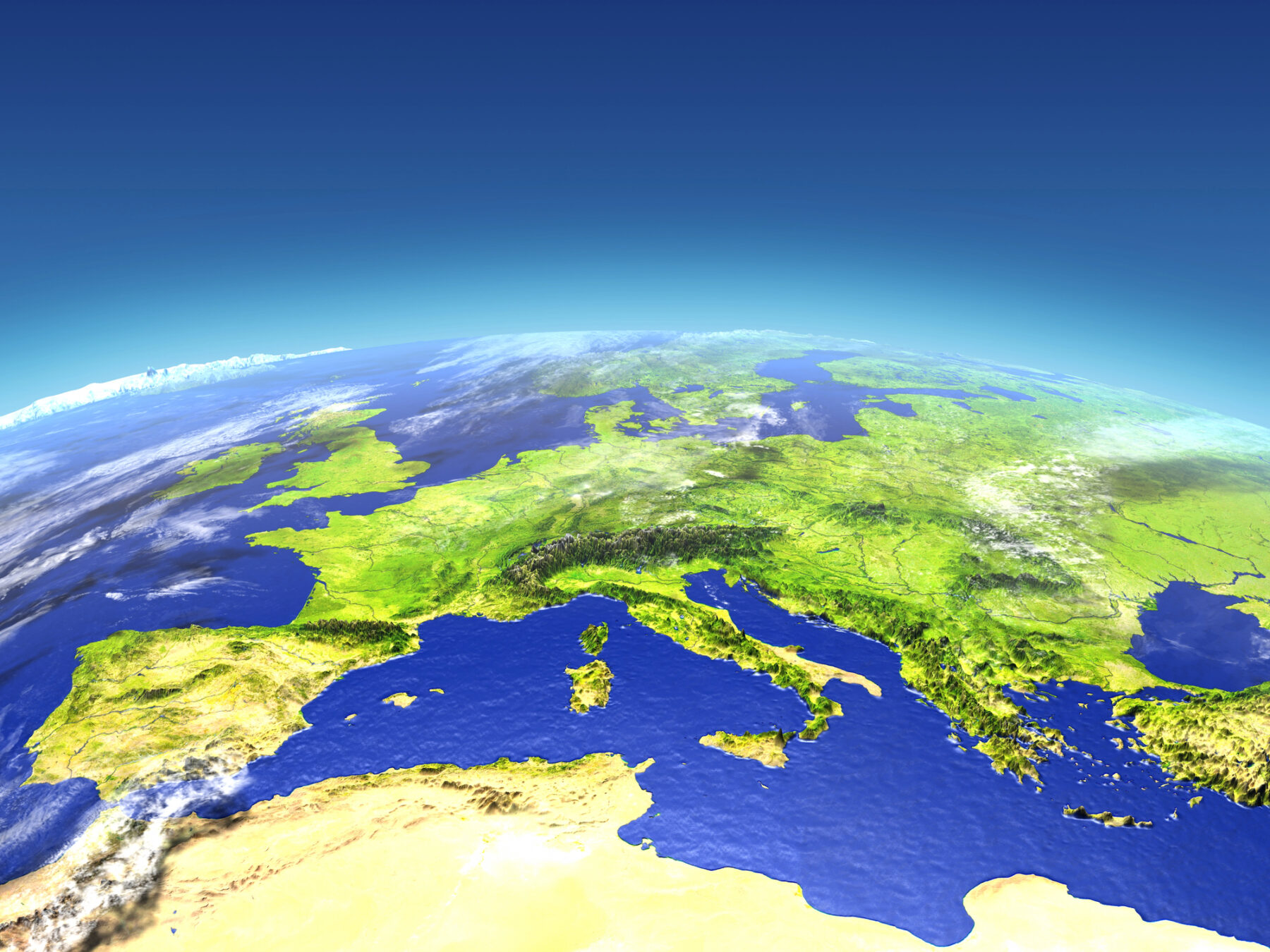The polar jet stream has influenced the european climate for more than 700 years: researchers from the Polytechnic University of Madrid have participated in an international study, published in Naturewhich analyzes how this current has had a decisive influence on the european climate for more than 700 years causing extreme events such as forest fires, epidemics or floods.
Jetstreams are concentrated bands of winds at the top of the atmosphere that flow around the Earth in both hemispheres.. Its location is not fixed, but varies depending on changes in the position and intensity of high and low pressure systems. These currents can change their course, move north or south, as well as increase their sinuosity, sometimes resembling a fast-flowing current and sometimes a slow, meandering river.
But what does this have to do with the climate and Why are these currents so important?? The answer is in a work led by researchers from the University of Arizona (USA) and which has shown that one of them, specifically the polar jet stream of the northern hemispherehas been related to the occurrence of extreme phenomena in Europe for more than 700 years.
“During the summer months, some dominant configurations of the polar jet stream give rise to extreme and opposing weather between northwest and southeast Europe, generating a spatial pattern called the ‘climate dipole’,” he explains. Isabel Dorado Liñánresearcher at the Polytechnic University of Madrid and one of the co-authors of this work.
“These climate dipoles directly affect natural systems such as forests, which grow more than normal on one side of the dipole while reducing their growth on the other,” he explains, referring to the results of an article published in 2022 in the magazine Nature Communications.

“When the jet stream is in a more northerly position, we have colder and wetter conditions in the British Isles and warmer, drier conditions in the Mediterranean and the Balkans“explained Ellie Broadman, former postdoctoral researcher at the Tree-Ring Research Laboratory at the University of Arizona and co-author of this work. “An example of the impact we have witnessed recently, with the catastrophic floods in central Europe,” he adds.
In contrast, when the polar jet stream migrates further south, it results in less warm and wetter summers in southeastern Europe, while the northwest experiences warmer, drier summers.
The tree growth ring thermometer
But to what extent have jet streams historically been responsible for extreme climatic, economic and social phenomena in Europe? Is the impact different now due to anthropogenic climate change or has it been this way for centuries? That was the question that the researchers asked themselves and, to answer, performed an indirect estimate using samples of growth rings from centenary and millennia-old trees from different regions of Europe..
“The position of the jet stream can be estimated with existing climate data, but these extend, in the best case, to the beginning of the 20th century. In order to evaluate the influence that the variation in the position of the jet stream has had on the long-term climate, we first had to reconstruct the movements of the polar jet stream over Europe,” explains Dorado.
This is possible because every year, Trees add a ring that records environmental conditionsand therefore the climatic ones, during their formation. By analyzing tree growth rings, dendrochronologists can compile an archive of past climate. Thus, the researchers linked the growth rings of three regions of Europe with the shifts in the band of atmospheric winds many kilometers high through the changes that these shifts produce in the temperature at surface level.
“We discovered that the jet stream displacements far north or far south of their usual position during the summer have historically been associated with a series of ecological, economic and social impacts such as forest fires, the yield and quality of crops and their derived products such as wine and epidemics,” explains Dorado.
Since these impacts are related to surface climatic conditions, this demonstrates how the polar jet stream has influenced the summer climate on the Earth’s surface for the last 700 years and, to give specific examples, epidemics occurred more frequently in the British Isles when the jet stream was further north, as summers were wet and cold, people stayed indoors and conditions were more conducive to the spread of disease,” he explains. Valerie Trouetco-author of the article and professor at the University of Arizona.
“Another notable example is the Black Death, which devastated Ireland between 1348 and 1350, when the jet stream was in an extreme position, in the far north of Europe.” The researchers also found that, historically, forest fires in the Balkans were more frequent when the jet stream was in that northern position that creates dry and hot conditions, something that has also been seen this past summer.
Possible future impacts
And part of the relevance of this work lies in the fact that its results can also be applied to possible future impacts of climate change If the evolution of the position of the jet stream.
“The long-term relationship between the latitudinal position of the polar jet stream and extreme events in Europe also provides context for current conditions and defines the types of extremes we could experience under continued global warming. “For example, our results suggest that if, as some studies describe, the average position of the jet stream shifts northward as a result of global warming, crop yields would likely decline on both sides of the dipole,” says Trouet. .
Researchers from 12 countries have participated in the work and it has been carried out under the umbrella of a research project of the prestigious CAREER_Grant program of the National Science Foundation (NSF) of the United States of America, awarded to Valerie Trouet.

